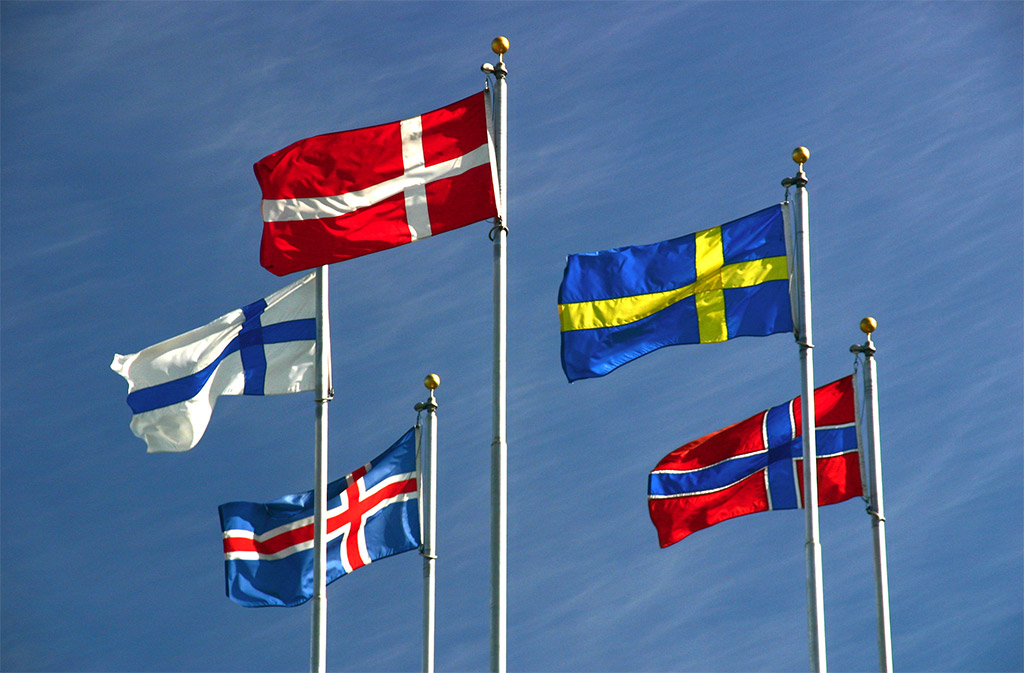Editors’ Note: This forum is featured in our spring 2023 issue. Order a copy here.
I’m sympathetic to Christine Sypnowich’s view that flourishing is at the core of what we want in a good society. She’s far from alone. To cite just one example, a recent European Commission report on the future of the welfare state contends that
welfare provision should not merely be assessed in terms of its impact on people’s material conditions, but even more so in terms of fostering people’s capability to fulfil personal aspirations. Slowly at first, social citizenship values have gradually shifted. Fairness is less likely to be seen as being about ‘here-and-now’ compensation, and more about how to pro-actively ensure ‘human flourishing’ and well-being.
What institutions and policies are most conducive to flourishing? We have a good bit of evidence on this, and that evidence suggests the Nordic model—I call it “social democratic capitalism”—does quite well. It features political democracy, a mixed but mostly capitalist economy, good basic education, expansive and generous public insurance programs, employment-friendly public services, and moderate regulation of product and labor markets.
Something approximating this model has been in place in Denmark, Norway, and Sweden for four or five decades, and in Finland for several. Other rich democratic nations have embraced it to a lesser degree. Across those countries, greater commitment to this model is associated with better economic security, higher living standards for the least well-off, and more equality of opportunity for economic success. And this is achieved without sacrificing other elements of a good society, from freedom and economic growth to family, community, and much more.
How does this set of policies and institutions promote flourishing? Three ways are particularly noteworthy.
First, it ensures everyone has access to a variety of key goods and services at little or no cost: safety, water, food (school breakfast and lunch), health care, child care, preschool, elementary school, secondary school, college (zero tuition), job training, job placement assistance, housing assistance, disability services, transportation, information (internet, libraries), legal rights and representation, financial safeguards such as bank deposit insurance and bankruptcy protection, public spaces such as parks and museums, disaster prevention and relief, eldercare, and more.
Second, it cushions against many of life’s risks. Paid parental leave, child care, preschool, and a child allowance help with the cost and time burden of childrearing. Training, apprenticeships, job placement assistance, an earnings subsidy (like the Earned Income Tax Credit), a guaranteed minimum income, retraining, and lifelong learning boost the labor market opportunities of people who struggle with school and increase incomes for those with low earnings. Unemployment insurance, sickness insurance, and disability payments help to ensure that if you aren’t able to work, or can’t work as much as you’d like, your income won’t drop too much. Retirement pensions and eldercare ensure that when your work years are finished you won’t live in poverty or lack needed assistance.
Third, it facilitates and encourages paid work. I’ve already mentioned many of the key supports. There are also supports for flexible working hours along with mandates for thirty or so paid vacation days and holidays each year. Employment doesn’t contribute to flourishing for everyone, but it does help many people. And we need a lot of adults in paid work to fund abundant public goods and services and insurance programs without exorbitant tax rates.
This doesn’t guarantee that every person will find their soulmate and their calling and live blissfully for 115 years. But it does ensure that everyone has much of what’s needed for a life that is fulfilling. Life tends to be stunted when people have to spend much of their day worrying about their personal safety, driving for hours to and from a job, or fearing they’ll be unable to pay the rent, get needed medical treatment, or afford child care. These types of concerns dominate mental bandwidth, cause stress and anxiety, impede long-term thinking and planning, and make change risky. Thankfully, we have the knowledge and the resources to remove these and other impediments for nearly everyone.
The total cost of public programs, goods, services, and government operations amounts to about half of an affluent country’s gross domestic product. For most households in these countries, somewhere between one-third and half of income goes to the government in taxes.
Skeptics on the left sometimes suggest that social democratic capitalism peaked in the 1960s and 1970s, retreating since then in the face of a business offensive and economic globalization. But that’s mistaken. In fact, it’s precisely during the post-1970s period that the Nordic countries solidified a policy approach coupling a big welfare state with employment promotion. And key outcomes haven’t worsened. Many have improved.
Not only has social democratic capitalism worked very well up to now. It also is well positioned to face some key challenges that lie ahead, including population aging, economic globalization, and the weakening of family and civic organizations. Let me highlight two others.
First, advances in automation and the rise of the gig and platform economies have increased work flexibility but also precariousness. This may cause more people to fear losing their jobs, move in and out of jobs, work irregularly, or work multiple jobs. In this environment, individuals and households will be more economically secure if benefits and insurance are generous and provided by government. Think of a stereotypical member of the modern precariat, working irregular shifts at a coffee shop and driving for an on-demand ride service. In the contemporary United States, such a life can be semi-hellish—low-income, unpredictable, at the mercy of finicky managers and customers. Now imagine it where every person has the kinds of public services and goods and insurance I’ve described here. In this latter context, while irregular or low-paid employment may still be suboptimal, it will be noticeably less stressful and problematic.
Second, what about robots and artificial intelligence replacing jobs currently performed by humans? As this plays out, more and more of us will work in in-person service positions—caring, repairing, healing, cooking, cleaning, teaching, training, mentoring, coaching, counseling, advising, planning, organizing. (In other words, the kinds of services upper-middle-class Americans currently purchase for themselves, their children, and their elderly parents.) People in these types of jobs will have a greater ability to flourish, to have a good life, if they are supported by an array of goods, services, benefits, and insurance programs that are guaranteed by government.
Social democratic capitalism doesn’t achieve, or even aim for, the equality of flourishing Sypnowich favors. It’s something closer to equality of opportunity for flourishing, though with a recognition that ensuring such opportunity (or, if you prefer, capability) continues throughout the life course. Once we get closer to genuinely equal opportunity for flourishing, we’ll be in a better position to decide whether it’s feasible, and if so desirable, to aim for equality of actual flourishing.
In short: if affluent countries, and perhaps also middle-income ones, want to promote flourishing, they should start by copying the Nordic model.
We’re interested in what you think. Submit a letter to the editors at letters@bostonreview.net. Boston Review is nonprofit, paywall-free, and reader-funded. To support work like this, please donate here.








